Freedom from China? The Mine at the Centre of Europe’s Push for Rare Earth Metals
The Guardian
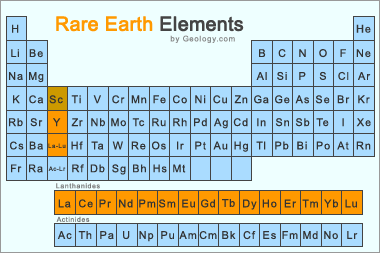
From the article: "Swedish producer is trying to accelerate the process of extracting the elements vital for hi-tech products." Image: The Rare Earth Periodic Table: The Rare Earth Elements are the 15 lanthanide series elements, plus yttrium. Scandium is found in most rare earth element deposits and is sometimes classified as a rare earth element. Image by Geology.com.
The Guardian

From the article: "Swedish producer is trying to accelerate the process of extracting the elements vital for hi-tech products." Image: The Rare Earth Periodic Table: The Rare Earth Elements are the 15 lanthanide series elements, plus yttrium. Scandium is found in most rare earth element deposits and is sometimes classified as a rare earth element. Image by Geology.com.
Rare Earth Element Production is Up... China Is Still the Big Producer
Geology.com

This chart shows a history of rare earth element production, in metric tons of rare earth oxide equivalent, between 1950 and 2024. It clearly shows the United States' entry into the market in the mid-1960s when color television exploded demand. When China began selling rare earths at very low prices in the late 1980s and early 1990s, mines in the United States were forced to close because... read the full caption and article.
Geology.com

This chart shows a history of rare earth element production, in metric tons of rare earth oxide equivalent, between 1950 and 2024. It clearly shows the United States' entry into the market in the mid-1960s when color television exploded demand. When China began selling rare earths at very low prices in the late 1980s and early 1990s, mines in the United States were forced to close because... read the full caption and article.
15 Awesome Images From One of the World’s Most Impressive Aerial Photographers
Smithsonian Magazine
From the article: "From the cockpit of his plane, photographer Jassen Todorov’s eagle eye captures memorable landscapes"
Smithsonian Magazine
From the article: "From the cockpit of his plane, photographer Jassen Todorov’s eagle eye captures memorable landscapes"
January Birthstone: Garnet, A Mineral (and Gemstone) of Many Colors
Geology.com

Gem Garnets: When most people think of garnet, they think of a red gemstone. However, garnet is a mineral which occurs in a wide variety of colors. Clockwise from the top left: red almandine (Madagascar), green tsavorite (Tanzania), yellow mali (Mali), orange spessartite (Mozambique), pink malaya (Tanzania), green merelani mint (Tanzania), red pyrope (Cote d'Ivoire), green demantoid (Namibia), purple rhodolite (Mozambique), and orange hessonite (Sri Lanka).
Geology.com

Gem Garnets: When most people think of garnet, they think of a red gemstone. However, garnet is a mineral which occurs in a wide variety of colors. Clockwise from the top left: red almandine (Madagascar), green tsavorite (Tanzania), yellow mali (Mali), orange spessartite (Mozambique), pink malaya (Tanzania), green merelani mint (Tanzania), red pyrope (Cote d'Ivoire), green demantoid (Namibia), purple rhodolite (Mozambique), and orange hessonite (Sri Lanka).
25 Years of Chocolate Diamonds: Le Vian Marks a Jewelry Milestone
JCK Online
The name "Chocolate Diamonds®" is a registered trademark of Le Vian, a family-owned jewelry company with a long history dating back to the 15th century. In the early 2000s, Le Vian started using the name Chocolate Diamonds® for diamonds that graded to a limited range of brown hues - carefully chosen to register "chocolate" in a shopper's eye. The name was descriptive, fun, and became very popular. It elevated common brown diamonds to a new and special plane of desirability. Take a look at the diamonds shown in this article and see for yourself.
JCK Online
The name "Chocolate Diamonds®" is a registered trademark of Le Vian, a family-owned jewelry company with a long history dating back to the 15th century. In the early 2000s, Le Vian started using the name Chocolate Diamonds® for diamonds that graded to a limited range of brown hues - carefully chosen to register "chocolate" in a shopper's eye. The name was descriptive, fun, and became very popular. It elevated common brown diamonds to a new and special plane of desirability. Take a look at the diamonds shown in this article and see for yourself.
Maduro's Capture in Oil-Rich Venezuela Will Not Drop U.S. Gasoline Prices Any Time Soon
CNBC Oil and Gas
Although the United States says it is going to take over Venezuela's oil and gas industry, imports from Venezuela into the U.S. will not lower U.S. gasoline prices right away. Why? 1) Venezuela currently produces less than a million barrels per day, 2) the country's oil & gas infrastructure is in terrible condition, and, 3) ramping up production will take years.
CNBC Oil and Gas
Although the United States says it is going to take over Venezuela's oil and gas industry, imports from Venezuela into the U.S. will not lower U.S. gasoline prices right away. Why? 1) Venezuela currently produces less than a million barrels per day, 2) the country's oil & gas infrastructure is in terrible condition, and, 3) ramping up production will take years.
A Siberian Snowman in Billings (Siberia)
NASA Earth Observatory

Icons of winter are sometimes found in unexpected places. In one striking example, a series of oval lagoons in a remote part of Siberia forms the shape of a towering snowman when viewed from above. NASA Earth Observatory image by Michala Garrison, using Landsat data from USGS. Story by Adam Voiland.
NASA Earth Observatory

Icons of winter are sometimes found in unexpected places. In one striking example, a series of oval lagoons in a remote part of Siberia forms the shape of a towering snowman when viewed from above. NASA Earth Observatory image by Michala Garrison, using Landsat data from USGS. Story by Adam Voiland.
Lake Eyre Blushes
NASA Earth Observatory

Rounding out a remarkable year, the outback lake displayed distinct green and reddish water in its two main bays. NASA Earth Observatory image by Lauren Dauphin, using Landsat data from USGS. Story by Lindsey Doermann.
NASA Earth Observatory

Rounding out a remarkable year, the outback lake displayed distinct green and reddish water in its two main bays. NASA Earth Observatory image by Lauren Dauphin, using Landsat data from USGS. Story by Lindsey Doermann.
Don’t Miss These Ten Celestial Events in 2026, From Aligned Planets to a Total Solar Eclipse
Smithsonian Magazine

Mark your 2026 Calendar to make sure that you don't miss your favorite events. The "progression of a solar eclipse" image displayed above is a public domain image created by Keegan Barber of NASA.


Get free printable calendars, graph paper, targets and outline maps at our WaterproofPaper.com website.
Smithsonian Magazine

Mark your 2026 Calendar to make sure that you don't miss your favorite events. The "progression of a solar eclipse" image displayed above is a public domain image created by Keegan Barber of NASA.


Get free printable calendars, graph paper, targets and outline maps at our WaterproofPaper.com website.
USGS National Water Dashboard ** Highly Recommended **
United States Geological Survey

The USGS National Water Dashboard is an interactive U.S. map with lots of useful water and weather data. You can find real-time stream gage data, current and forecasted weather and hazard conditions, alerts for flooding, fire, air quality, and more. The base map is customizable to show topographic information, roads and streets, or satellite imagery. Check it out!
United States Geological Survey

The USGS National Water Dashboard is an interactive U.S. map with lots of useful water and weather data. You can find real-time stream gage data, current and forecasted weather and hazard conditions, alerts for flooding, fire, air quality, and more. The base map is customizable to show topographic information, roads and streets, or satellite imagery. Check it out!
The Best Science Images of 2025 - Nature's Picks
Nature
Nature has revealed some of their favorite photos and images from 2025. From massive nebulae to microscopic algae, you won't want to miss this stunning compilation.
Nature
Nature has revealed some of their favorite photos and images from 2025. From massive nebulae to microscopic algae, you won't want to miss this stunning compilation.
Australia Energy Report
Energy Information Administration

Fossil fuels accounted for almost 98% of Australia's primary energy production. A large producer of both natural gas and coal, Australia is a net exporter of energy. Around two-thirds of Australia's production is exported. More information on the article page.
Energy Information Administration

Fossil fuels accounted for almost 98% of Australia's primary energy production. A large producer of both natural gas and coal, Australia is a net exporter of energy. Around two-thirds of Australia's production is exported. More information on the article page.
Lab-Grown Diamonds Are "Mainstream." Now What?
JCK Oline

Now the sector's marketing must evolve so they're seen less as a natural diamond substitute and more as a distinct product.
JCK Oline

Now the sector's marketing must evolve so they're seen less as a natural diamond substitute and more as a distinct product.
What Lies Beneath Greenland Could Change What We Know About Rising Seas
Phys.org

A new study by the University of Ottawa provides a series of detailed 3D models of the Earth's temperature beneath Greenland and northeastern Canada, providing insights into the region's geological history and the response of the ice sheet to past and future climate change.
Phys.org

A new study by the University of Ottawa provides a series of detailed 3D models of the Earth's temperature beneath Greenland and northeastern Canada, providing insights into the region's geological history and the response of the ice sheet to past and future climate change.
Are These 400,000-Year-Old Rock Fragments the Oldest Evidence of Human Fire-Making?
Smithsonian Magazine
Could These 400,000-Year-Old Rock Fragments Be the Oldest Known Evidence of Human Fire-Making?
Smithsonian Magazine
Could These 400,000-Year-Old Rock Fragments Be the Oldest Known Evidence of Human Fire-Making?
This Lemon-Shaped Planet Has an Atmosphere Unlike Anything Astronomers Have Ever Seen
Smithsonian Magazine

The James Webb Space Telescope detected an atmosphere rich with carbon and helium, which is unexpected on this hot planet roughly 2,000 light-years from Earth. The image is in the public domain and is attributed to NASA, ESA, CSA, Ralf Crawford (STScI).
Smithsonian Magazine

The James Webb Space Telescope detected an atmosphere rich with carbon and helium, which is unexpected on this hot planet roughly 2,000 light-years from Earth. The image is in the public domain and is attributed to NASA, ESA, CSA, Ralf Crawford (STScI).
Lessons and Lingering Questions from Collapsing Basaltic Calderas
EOS
From the article: "Research into the hazardous collapses of basaltic volcanoes has revealed common physical processes, but addressing remaining questions requires learning more from historical events." The video is by IRIS Earthquake Science.
EOS
From the article: "Research into the hazardous collapses of basaltic volcanoes has revealed common physical processes, but addressing remaining questions requires learning more from historical events." The video is by IRIS Earthquake Science.
New Eyes on One of the Planet’s Largest Submarine Landslides
EOS

The Stad Slide is a seafloor megaslide that occurred beneath the Norwegian Sea, between Norway and Greenland. It is estimated to be several hundred thousand years old. Researchers are working to determine if it produced a tsunami.
EOS

The Stad Slide is a seafloor megaslide that occurred beneath the Norwegian Sea, between Norway and Greenland. It is estimated to be several hundred thousand years old. Researchers are working to determine if it produced a tsunami.
Strawberry Quartz
Geology.com
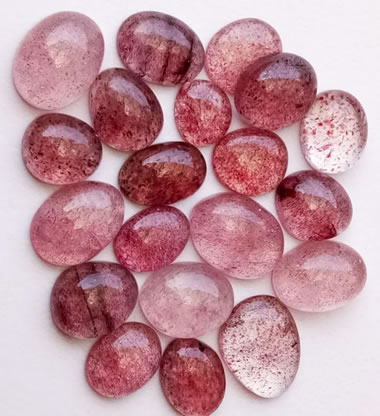
"Strawberry quartz" is a novelty gem and a marketing term used for specimens of pink to red quartz or quartzite that receive their color from eye-visible mineral inclusions. The photo shows a collection of beautiful strawberry quartz cabochons in a range of pink to red colors. The intensity of red color is related to the number of red mineral inclusions and their distribution within the stone. Photograph by Urvi Agrawal, owner of the GemsForJewels Etsy Store.
Geology.com

"Strawberry quartz" is a novelty gem and a marketing term used for specimens of pink to red quartz or quartzite that receive their color from eye-visible mineral inclusions. The photo shows a collection of beautiful strawberry quartz cabochons in a range of pink to red colors. The intensity of red color is related to the number of red mineral inclusions and their distribution within the stone. Photograph by Urvi Agrawal, owner of the GemsForJewels Etsy Store.
California Rain May Ease But More Mudslides, Flooding Possible (Video)
CBS News
A risk of high surf along the coast, flash flooding near Los Angeles and avalanches in the Sierra Nevada remain.
CBS News
A risk of high surf along the coast, flash flooding near Los Angeles and avalanches in the Sierra Nevada remain.
USGS Assessment of Undiscovered Gas Resources in the Haynesville Formation
United States Geological Survey

Using a geology-based assessment methodology, the U.S. Geological Survey estimated undiscovered,technically recoverable mean resources of 152 million barrels of oil and 47.9 trillion cubic feet of gasin reservoirs of the Haynesville Formation within the onshore United States and State waters of theGulf Coast Basin.
United States Geological Survey

Using a geology-based assessment methodology, the U.S. Geological Survey estimated undiscovered,technically recoverable mean resources of 152 million barrels of oil and 47.9 trillion cubic feet of gasin reservoirs of the Haynesville Formation within the onshore United States and State waters of theGulf Coast Basin.
Video: Flood Threat For Southern California As Atmospheric Rivers Target The State
The Weather Channel

Heavy rain has caused flash flooding and landslides.
The Weather Channel

Heavy rain has caused flash flooding and landslides.
Undiscovered Gas Resources in the Haynesville Formation (US Gulf Coast)
United States Geological Survey

Using a geology-based assessment methodology, the U.S. Geological Survey estimated undiscovered, technically recoverable mean resources of 152 million barrels of oil and 47.9 trillion cubic feet of gas in reservoirs of the Haynesville Formation within the onshore United States and State waters of the Gulf Coast Basin. Public domain map by the U.S. Geological Survey.
United States Geological Survey

Using a geology-based assessment methodology, the U.S. Geological Survey estimated undiscovered, technically recoverable mean resources of 152 million barrels of oil and 47.9 trillion cubic feet of gas in reservoirs of the Haynesville Formation within the onshore United States and State waters of the Gulf Coast Basin. Public domain map by the U.S. Geological Survey.
Flood Threat For Southern California As Atmospheric Rivers Target The State
The Weather Channel
Heavy rain has caused flash flooding and landslides in Southern California between December 23 and December 25.
The Weather Channel
Heavy rain has caused flash flooding and landslides in Southern California between December 23 and December 25.
USGS Assessment of Undiscovered Oil and Gas Under Santa Barbara County, California
United States Geological Survey

From the article: "The U.S. Geological Survey released its assessment of potential for undiscovered oil and gas in formations under the Santa Maria Basin geologic province under Santa Barbara County and part of San Luis Obispo County, California, assessing that there are technically recoverable resources of 67 million barrels of oil and 56 billion cubic feet of gas."
United States Geological Survey

From the article: "The U.S. Geological Survey released its assessment of potential for undiscovered oil and gas in formations under the Santa Maria Basin geologic province under Santa Barbara County and part of San Luis Obispo County, California, assessing that there are technically recoverable resources of 67 million barrels of oil and 56 billion cubic feet of gas."
EU Diamond Importers Must Do More Russian Diligence
JCKOnline
The European Union is tightening their import standards to reduce the number of Russian diamonds that are imported illegally. Now importers must attest to the statement below (and more):
"I, the undersigned, hereby declare that the non-industrial, natural, polished diamonds in this shipment were not mined, extracted, produced, or manufactured wholly or in part in the Russian Federation, notwithstanding whether such diamonds have been substantially transformed into other products outside of the Russian Federation."
JCKOnline
The European Union is tightening their import standards to reduce the number of Russian diamonds that are imported illegally. Now importers must attest to the statement below (and more):
"I, the undersigned, hereby declare that the non-industrial, natural, polished diamonds in this shipment were not mined, extracted, produced, or manufactured wholly or in part in the Russian Federation, notwithstanding whether such diamonds have been substantially transformed into other products outside of the Russian Federation."
Satellite Monitoring of Seasonal Pulses in Earth’s Glaciers
NASA Earth Observatory

From Alaska’s Saint Elias Mountains to Pakistan’s Karakoram, glaciers speed up and slow down with the seasons. The image is a view of the Baltoro and neighboring glaciers in Alaska. Red areas on the glaciers showed signs of movement when the image was captured (visit the article to see larger animated images). Images by Chad Greene and Alex Gardner, using data from the NASA MEaSUREs project ITS_LIVE. Story by Kathryn Hansen.
NASA Earth Observatory

From Alaska’s Saint Elias Mountains to Pakistan’s Karakoram, glaciers speed up and slow down with the seasons. The image is a view of the Baltoro and neighboring glaciers in Alaska. Red areas on the glaciers showed signs of movement when the image was captured (visit the article to see larger animated images). Images by Chad Greene and Alex Gardner, using data from the NASA MEaSUREs project ITS_LIVE. Story by Kathryn Hansen.
The Arctic Is the Hottest It's Been in 125 Years of Record-Keeping
NBC News

Iron released from melting permafrost in Arctic Alaska is giving many streams an orange color. The photograph shows an orange tributary of the Kugororuk River in the Brooks Range of Northern Alaska. The photo is by Josh Koch, a USGS staff member, and is displayed here as a public domain image.
NBC News

Iron released from melting permafrost in Arctic Alaska is giving many streams an orange color. The photograph shows an orange tributary of the Kugororuk River in the Brooks Range of Northern Alaska. The photo is by Josh Koch, a USGS staff member, and is displayed here as a public domain image.
From Black Shales to Drinking Water: What Groundwater Chemistry Tells Us
Speaking of Geoscience Blog
The author is Fidelis Onwuagba, a 2023 recipient of a Graduate Student Research Grant.
Speaking of Geoscience Blog
The author is Fidelis Onwuagba, a 2023 recipient of a Graduate Student Research Grant.
When Did People First Arrive in Australasia?
The Conversation
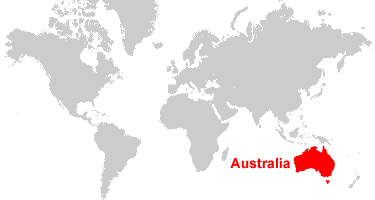
A new archaeogenetics study dates it to 60,000 years ago.
The Conversation

A new archaeogenetics study dates it to 60,000 years ago.
Ekati Diamond Mine Gets $115M Federal Loan, Avoids Bankruptcy
CBC - Radio Canada

Ekati is the name of the first diamond mine developed in the Northwest Territories of Canada in 1991. It was profitably worked for over 30 years but is currently facing bankruptcy. A loan from the Canadian government will put it back into operation and enable it to survive. The image is a low-angle aerial photograph of the open pit mine from 2010 showing three pits. The photo is by Jason Pineau and is displayed here under a Creative Commons License.
CBC - Radio Canada

Ekati is the name of the first diamond mine developed in the Northwest Territories of Canada in 1991. It was profitably worked for over 30 years but is currently facing bankruptcy. A loan from the Canadian government will put it back into operation and enable it to survive. The image is a low-angle aerial photograph of the open pit mine from 2010 showing three pits. The photo is by Jason Pineau and is displayed here under a Creative Commons License.
Diamond Mines in Canada
Geology.com
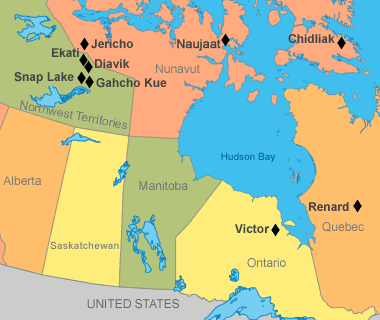
A map of Canadian diamond mines showing the approximate location of eight mines. Since producing its first commercial diamond in 1998, Canada has become one of the world's most important producers of gem-quality diamonds. Map by Geology.com and MapResources.
Geology.com

A map of Canadian diamond mines showing the approximate location of eight mines. Since producing its first commercial diamond in 1998, Canada has become one of the world's most important producers of gem-quality diamonds. Map by Geology.com and MapResources.
Get a Glimpse Inside the Life of a Doomsday Asteroid Hunter
Smithsonian Magazine
"David Rankin of the Catalina Sky Survey in Arizona spends nights scanning the solar system for potentially catastrophic space rocks. Here's what he has to say about that 'high consequence' work, an interstellar comet and living with uncertainty."
Smithsonian Magazine
"David Rankin of the Catalina Sky Survey in Arizona spends nights scanning the solar system for potentially catastrophic space rocks. Here's what he has to say about that 'high consequence' work, an interstellar comet and living with uncertainty."
Birthstones for the Month of December: Turquoise, Zircon, and Tanzanite
Geology.com
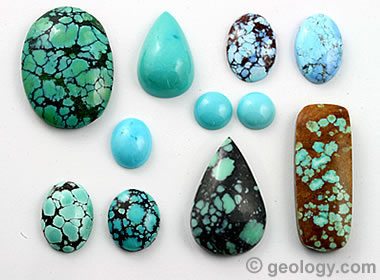
Turquoise is a traditional birthstone for the month of December.
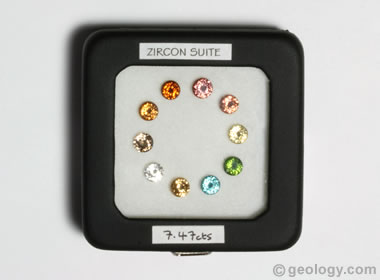
Zircon replaced lapis lazuli as a modern birthstone in 1952.
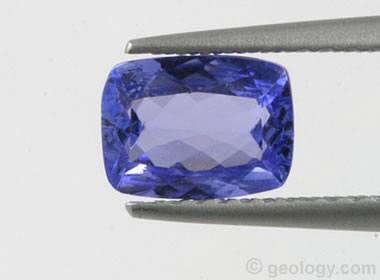
Tanzanite became the newest birthstone for the month of December when it was added in 2002.
Geology.com

Turquoise is a traditional birthstone for the month of December.

Zircon replaced lapis lazuli as a modern birthstone in 1952.

Tanzanite became the newest birthstone for the month of December when it was added in 2002.
A Giant Structure Deep Beneath Bermuda Is Unlike Anything Else on Earth
LiveScience.com

From the article: "A thick layer of more than 12 miles of rock may explain why Bermuda seems to float above the surrounding ocean."
LiveScience.com

From the article: "A thick layer of more than 12 miles of rock may explain why Bermuda seems to float above the surrounding ocean."
When Should a Tsunami Not Be Called a Tsunami?
EOS
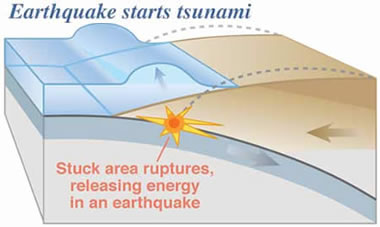
From the article: "It’s time to redefine the term so it more clearly conveys meaningful risks to coastal communities and prompts them to act when needed."
EOS

From the article: "It’s time to redefine the term so it more clearly conveys meaningful risks to coastal communities and prompts them to act when needed."
When Does Rainfall Become Recharge?
EOS
From the article: "Counting drips in caves is helping to reveal how much precipitation is needed to start refilling underground aquifers."
EOS
From the article: "Counting drips in caves is helping to reveal how much precipitation is needed to start refilling underground aquifers."
Modern Humans Reached Australia Around 60,000 Years Ago via Two Routes, Genetic Analysis Suggests
Smithsonian Magazine

The study bolsters one hypothesis of when people arrived at the landmass that became Australia and other islands, and presents some of the earliest evidence of seafaring. Map by Helen Farr and Erich Fisher displayed here under a creative commons license.
Smithsonian Magazine

The study bolsters one hypothesis of when people arrived at the landmass that became Australia and other islands, and presents some of the earliest evidence of seafaring. Map by Helen Farr and Erich Fisher displayed here under a creative commons license.
Newly Revealed Secrets About the 2,000-Year-Old Recipe for Roman Concrete
Smithsonian Magazine
The Romans’ hot-mixing method entailed blending volcanic ash and other dry ingredients with “quicklime,” a form of highly reactive, dry limestone. Adding water set off a chain reaction that produced heat—hence the name.
Smithsonian Magazine
The Romans’ hot-mixing method entailed blending volcanic ash and other dry ingredients with “quicklime,” a form of highly reactive, dry limestone. Adding water set off a chain reaction that produced heat—hence the name.
NASA Detects a Thick Atmosphere Around a Broiling Lava World
NASA

The image shows an artist's concept of a "Super-Earth Exoplanet TOI-561 b" (right) and its star (left). The exoplanet is thought be covered by a magma ocean, surrounded by a thick atmosphere, and have a density that is much lower than expected.
NASA

The image shows an artist's concept of a "Super-Earth Exoplanet TOI-561 b" (right) and its star (left). The exoplanet is thought be covered by a magma ocean, surrounded by a thick atmosphere, and have a density that is much lower than expected.
98% of Gaza’s Tree Cropland Destroyed by Israel
EOS
From the article: "Maps based on remote sensing analysis could inform remediation efforts by identifying whether agricultural lands were damaged by bombs, debris, or forced displacement of its caretakers."
EOS
From the article: "Maps based on remote sensing analysis could inform remediation efforts by identifying whether agricultural lands were damaged by bombs, debris, or forced displacement of its caretakers."
A New Era of Floods Has Arrived. America Isn’t Prepared.
The Washington Post
A Washington Post investigation reveals why so few people evacuated in the state hit hardest by last year’s deadliest disaster.
The Washington Post
A Washington Post investigation reveals why so few people evacuated in the state hit hardest by last year’s deadliest disaster.
Flash Flooding in Oman - One of the Driest Places in the World
YouTube channel of Marsha Godino

This YouTube Short by Marsha Godino (@gurosaoman), a classroom teacher in Oman, shows flash flood waters caused by heavy rain, tearing through Siya, Qurrayat, Oman. If you look at the buildings you will see mud on porches and patios and a high-water mark on the white buildings about six feet above street level.
YouTube channel of Marsha Godino

This YouTube Short by Marsha Godino (@gurosaoman), a classroom teacher in Oman, shows flash flood waters caused by heavy rain, tearing through Siya, Qurrayat, Oman. If you look at the buildings you will see mud on porches and patios and a high-water mark on the white buildings about six feet above street level.
This Site in Bolivia Boasts 16,600 Exposed Dinosaur Footprints --
The Most Ever Found in One Location
Smithsonian Magazine
From the article: "Millions of years ago, dinosaurs hightailed their way across what is now a national park in Bolivia."
The Most Ever Found in One Location
Smithsonian Magazine
From the article: "Millions of years ago, dinosaurs hightailed their way across what is now a national park in Bolivia."
Archaeologists Are Unraveling the Mysteries Behind Deep Pits Found Near Stonehenge
Smithsonian Magazine
From the article: "Based on a comprehensive study, researchers are now convinced the shafts were human-made, likely dug during the Late Neolithic period roughly 4,000 years ago."
Smithsonian Magazine
From the article: "Based on a comprehensive study, researchers are now convinced the shafts were human-made, likely dug during the Late Neolithic period roughly 4,000 years ago."
Stonehenge: A Monument Made of a Unique Diabase
Geology.com
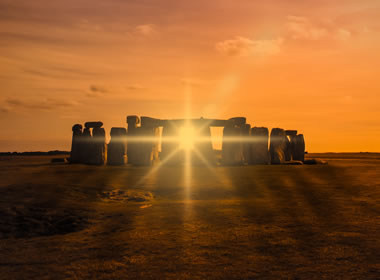
Sunrise at Stonehenge: The standing stones at Stonehenge were placed to be in alignment with sunset on the winter solstice and sunrise on the summer solstice. Photograph copyright iStockphoto / Stephen Barnes.
Geology.com

Sunrise at Stonehenge: The standing stones at Stonehenge were placed to be in alignment with sunset on the winter solstice and sunrise on the summer solstice. Photograph copyright iStockphoto / Stephen Barnes.
The Land Beneath Antarctica’s Ice Might Be Full of Water
EOS
Quote from the article: "Now, using an array of seismic sensors, researchers from Stony Brook University have added more data points to the map of subglacial Antarctica, finding evidence of a layer of water-saturated sediments or rock under the ice."
EOS
Quote from the article: "Now, using an array of seismic sensors, researchers from Stony Brook University have added more data points to the map of subglacial Antarctica, finding evidence of a layer of water-saturated sediments or rock under the ice."
Massive Groundwater Systems Lie Beneath Antarctic Ice
From the EOS Archive - June 2022
From the article: Researchers from "Scripps Institution of Oceanography, have confirmed scientific suspicions, uncovering significant groundwater amid sediment below ice sheets in Whillans Ice Stream in Antarctica."
From the EOS Archive - June 2022
From the article: Researchers from "Scripps Institution of Oceanography, have confirmed scientific suspicions, uncovering significant groundwater amid sediment below ice sheets in Whillans Ice Stream in Antarctica."
Planet-Eating Stars Hint at Earth's Ultimate Fate
EOS

After a star exhausts its hydrogen nuclear fuel, its diameter expands more than a hundredfold, engulfing any unlucky planets in close orbits. The image is an artist's impression of an ultra-hot exoplanet, a planet beyond our Solar System, as it is about to transit in front of its host star. Image created by the European Southern Observatory and displayed here under a Creative Commons license. More information about the image and its license can be found here.
EOS

After a star exhausts its hydrogen nuclear fuel, its diameter expands more than a hundredfold, engulfing any unlucky planets in close orbits. The image is an artist's impression of an ultra-hot exoplanet, a planet beyond our Solar System, as it is about to transit in front of its host star. Image created by the European Southern Observatory and displayed here under a Creative Commons license. More information about the image and its license can be found here.
Enormous Lava Fountain Reaching 1000 Feet Erupts At Kilauea (Dec. 6, 2025)
Big Island Video News
Images and video created by the U.S. Geological Survey.
Big Island Video News
Images and video created by the U.S. Geological Survey.
USGS Updates on Eruption at Kilauea Crater
United States Geological Survey
Links to videos, photos, maps and more related to the early December eruptions at Kilauea.
United States Geological Survey
Links to videos, photos, maps and more related to the early December eruptions at Kilauea.
Researchers Discover the Shocking Age of the Mysterious Pecos River Rock Art
Smithsonian Magazine
The murals were painted on limestone canyon walls, in the same style, over the span of four millennia.
Smithsonian Magazine
The murals were painted on limestone canyon walls, in the same style, over the span of four millennia.
Archaeologists Say: Conch Shells May Have Been Used to Make Music 6,000 Years Ago
Smithsonian Magazine
From the article: New research suggests that a collection of conch shells unearthed in Spain may have once produced melodies, in addition to enabling communication across long distances.
Smithsonian Magazine
From the article: New research suggests that a collection of conch shells unearthed in Spain may have once produced melodies, in addition to enabling communication across long distances.
Ethiopian Volcano Erupts for the First Time in Recorded History
Smithsonian Magazine
In northern Ethiopia, the Hayli Gubbi volcano has erupted for the first time in recorded history - or at least, it is the first recorded eruption in history. The shield volcano expelled a large ash plume, which drifted over 2,200 miles into Asia, blanketing villages in volcanic ash and affecting air travel. Hayli Gubbi is located in the Afar Depression, which is part of the East African Rift System.
Smithsonian Magazine
In northern Ethiopia, the Hayli Gubbi volcano has erupted for the first time in recorded history - or at least, it is the first recorded eruption in history. The shield volcano expelled a large ash plume, which drifted over 2,200 miles into Asia, blanketing villages in volcanic ash and affecting air travel. Hayli Gubbi is located in the Afar Depression, which is part of the East African Rift System.
East Africa's Great Rift Valley: A Complex Rift System
Geology.com
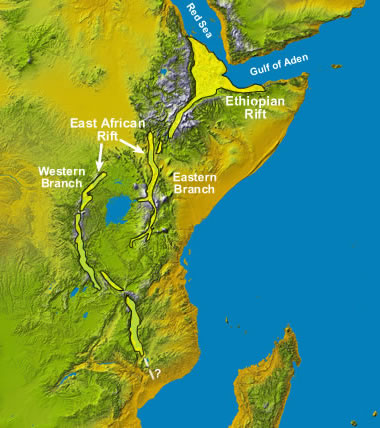
The image above shows the segments of the East African Rift System. The basemap is a Space Shuttle radar topography image by NASA.
Geology.com

The image above shows the segments of the East African Rift System. The basemap is a Space Shuttle radar topography image by NASA.
Volcanic Ash - The Product of a Volcano that is Often Underestimated
Geology.com
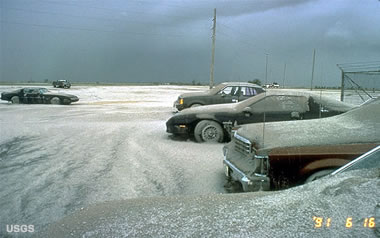
Volcanic ash on cars at Clark Air Base in the Philippines after the 1991 eruption of Mount Pinatubo. This parking lot is about 25 kilometers east of the eruption and received about 9 centimeters of ash. USGS image by R.P. Hoblitt.
Geology.com

Volcanic ash on cars at Clark Air Base in the Philippines after the 1991 eruption of Mount Pinatubo. This parking lot is about 25 kilometers east of the eruption and received about 9 centimeters of ash. USGS image by R.P. Hoblitt.
Deep Groundwater Might Be a Sustainable Solution to the Water Crisis
EOS
From the article: Scientists are finding fresh groundwater buried deep underground, but questions remain about the scale of these resources, how they're resupplied, and whether they can be used sustainably.
EOS
From the article: Scientists are finding fresh groundwater buried deep underground, but questions remain about the scale of these resources, how they're resupplied, and whether they can be used sustainably.
Self-Guided Walking Tour: Three Rivers Petroglyph Site
Bureau of Land Management

The petroglyphs (rock carvings) were made by prehistoric Native Americans that archaeologists refer to as the Jornada Mogollon. The pictures were made with stone tools by removing the dark patina on the exterior of the rock. The patina is formed through oxidation (when oxygen in the air comes into contact with the minerals in the rock's surface).
Petroglyphs have a unique visual impact, providing immediate connection between the modern viewer and the original creators. They give us a glimpse into the minds of the people who lived over 1,000 years ago.
The site is located 17 miles north of Tularosa, NM, and 28 miles south of Carrizozo, NM on U.S. 54. Turn east from U.S. 54 at Three Rivers onto County Road B30 and travel five miles on paved road, following signs.
Bureau of Land Management

The petroglyphs (rock carvings) were made by prehistoric Native Americans that archaeologists refer to as the Jornada Mogollon. The pictures were made with stone tools by removing the dark patina on the exterior of the rock. The patina is formed through oxidation (when oxygen in the air comes into contact with the minerals in the rock's surface).
Petroglyphs have a unique visual impact, providing immediate connection between the modern viewer and the original creators. They give us a glimpse into the minds of the people who lived over 1,000 years ago.
The site is located 17 miles north of Tularosa, NM, and 28 miles south of Carrizozo, NM on U.S. 54. Turn east from U.S. 54 at Three Rivers onto County Road B30 and travel five miles on paved road, following signs.
Types of Rock Art: Petroglyphs and Pictographs
Geology.com

A petroglyph is an image that is carved into a rock. This "carving" can produce a visible indentation in the rock, or it can simply be the scratching away of a weathered surface to reveal unweathered material of a different color below. Image copyright iStockphoto / amygdala_imagery.
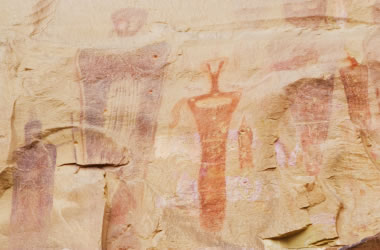
A pictograph is a drawing or painting that is created on a rock. It is not "carved" into the rock. Image copyright iStockphoto / Andrea Gingerich.
Geology.com

A petroglyph is an image that is carved into a rock. This "carving" can produce a visible indentation in the rock, or it can simply be the scratching away of a weathered surface to reveal unweathered material of a different color below. Image copyright iStockphoto / amygdala_imagery.

A pictograph is a drawing or painting that is created on a rock. It is not "carved" into the rock. Image copyright iStockphoto / Andrea Gingerich.
New Lessons from Old Ice: How We Understand Past (and Future) Heating
EOS

The oldest ice cores in the world have been extracted from blue ice areas like this one in Antarctica's Transantarctic Mountains. The cores are vital for better understanding Earth's early climate and refining contemporary climate models. Photograph by Chris Larsen, NASA Earth Observatory.
EOS

The oldest ice cores in the world have been extracted from blue ice areas like this one in Antarctica's Transantarctic Mountains. The cores are vital for better understanding Earth's early climate and refining contemporary climate models. Photograph by Chris Larsen, NASA Earth Observatory.
Get the Recreation.gov Mobile App
Recreation.gov

Adventure is at your fingertips with the Recreation.gov mobile app! From booking a weekend getaway to planning a cross-country road trip, the Recreation.gov app helps you find and reserve campsites, review location details for your trip, and quickly access information on past and upcoming reservations.
Recreation.gov

Adventure is at your fingertips with the Recreation.gov mobile app! From booking a weekend getaway to planning a cross-country road trip, the Recreation.gov app helps you find and reserve campsites, review location details for your trip, and quickly access information on past and upcoming reservations.
Features from the Field: Dikes and Sills
Blogs of the European Geosciences Union

Mesozoic Lamprophyre dike crosscutting Ordovician sediments near Leading Tickles, Newfoundland, Canada. Photograph by Alexander Peace, distributed via imaggeo.egu.eu and displayed here under a Creative Commons License.
Blogs of the European Geosciences Union

Mesozoic Lamprophyre dike crosscutting Ordovician sediments near Leading Tickles, Newfoundland, Canada. Photograph by Alexander Peace, distributed via imaggeo.egu.eu and displayed here under a Creative Commons License.
Uranus's Small Moons Are Dark, Red, and Water-Poor
EOS

The solar system's oddball planet has some pretty odd moons. The diagram illustrates the orbital distances of Uranus's inner moons and rings. The surface of Uranus is the light blue arc at the top of the figure. Click the image to enlarge.
EOS

The solar system's oddball planet has some pretty odd moons. The diagram illustrates the orbital distances of Uranus's inner moons and rings. The surface of Uranus is the light blue arc at the top of the figure. Click the image to enlarge.
Underwater Kelp Forests are Making a Comeback in California
Smithsonian Magazine
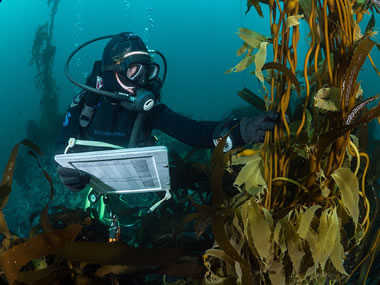
Kelp is a large type of algae that cleans and oxygenates the water, absorbs tons of carbon dioxide, and provides a habitat for countless aquatic species. This article discusses how restoration efforts are paying off for kelp forests along the coast of California. Areas that had become barren are now seeing the return of entire ecosystems of sea creatures that live within and rely on the kelp forests. Photo by Kate Vylet / California Sea Grant, displayed here under a Creative Commons license.
Smithsonian Magazine

Kelp is a large type of algae that cleans and oxygenates the water, absorbs tons of carbon dioxide, and provides a habitat for countless aquatic species. This article discusses how restoration efforts are paying off for kelp forests along the coast of California. Areas that had become barren are now seeing the return of entire ecosystems of sea creatures that live within and rely on the kelp forests. Photo by Kate Vylet / California Sea Grant, displayed here under a Creative Commons license.
When Cascadia Gives Way, the San Andreas Sometimes Follows
EOS

From the article: "Roughly half of the earthquakes that occurred along the southern Cascadia subduction zone over the past 3,000 years were temporally associated with earthquakes along the northern San Andreas fault." Block diagram of the Cascadia Subduction Zone by the United States Geological Survey.
EOS

From the article: "Roughly half of the earthquakes that occurred along the southern Cascadia subduction zone over the past 3,000 years were temporally associated with earthquakes along the northern San Andreas fault." Block diagram of the Cascadia Subduction Zone by the United States Geological Survey.
Sotheby's Set to Auction the Desert Rose, a 31.68-Carat Fancy Vivid Pink Diamond
JCKOnline

The Desert Rose has a rare "sunset-like" orangey hue and is estimated to be sold for between $5 million and $7 million. Photograph by Sotheby's.
JCKOnline

The Desert Rose has a rare "sunset-like" orangey hue and is estimated to be sold for between $5 million and $7 million. Photograph by Sotheby's.
All About Colored Diamonds
Geology.com
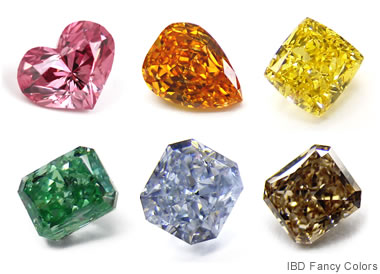
Colored diamonds are diamonds that have a noticeable bodycolor when viewed in the face-up position. Brown and yellow are the most common colors in natural colored diamonds. Diamonds with natural pink, blue, orange, green, red, and violet bodycolors are extremely rare. Images in the wonderful collection of colored diamonds shown above are used with permission of IBD Fancy Colors LLC.
Geology.com

Colored diamonds are diamonds that have a noticeable bodycolor when viewed in the face-up position. Brown and yellow are the most common colors in natural colored diamonds. Diamonds with natural pink, blue, orange, green, red, and violet bodycolors are extremely rare. Images in the wonderful collection of colored diamonds shown above are used with permission of IBD Fancy Colors LLC.
Video: Practical Uses of Birthstones
SciShow
Is your birthstone useful for scientific applications, or just pretty to look at? Find out in this video.
SciShow
Is your birthstone useful for scientific applications, or just pretty to look at? Find out in this video.
Birthstones by Month
Geology.com
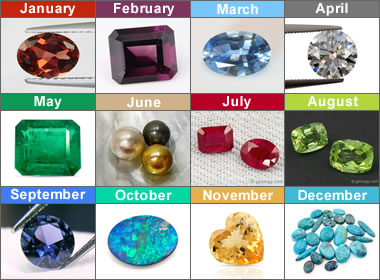
Giving the gift of birthstone jewelry is a long-standing tradition in the United States and many other countries.
Geology.com

Giving the gift of birthstone jewelry is a long-standing tradition in the United States and many other countries.
Three Regions in the U.S. Each Produce More Natural Gas Than Most Countries
Energy Information Administration

Maps and graphs by the United States Energy Information Administration
Energy Information Administration

Maps and graphs by the United States Energy Information Administration
Brazil Is Expanding Its LNG Import Infrastructure
Energy Information Administration

Brazil has been adding new liquified natural gas import facilities at a rapid rate. The country could be a potential market for U.S. natural gas producers and LNG export companies.
Energy Information Administration

Brazil has been adding new liquified natural gas import facilities at a rapid rate. The country could be a potential market for U.S. natural gas producers and LNG export companies.
What is LNG - Liquefied Natural Gas?
Geology.com

An LNG carrier ship docked at the Bontang LNG liquefaction terminal in East Kalimantan, Indonesia. The LNG is carried in the ship's four dome-shaped tanks. Image copyright iStockphoto / Mayumi Terao.
Geology.com

An LNG carrier ship docked at the Bontang LNG liquefaction terminal in East Kalimantan, Indonesia. The LNG is carried in the ship's four dome-shaped tanks. Image copyright iStockphoto / Mayumi Terao.
Faults vs. Fractures -- How to Tell Them Apart ?
Tectonics and Structural Geology at EGU Blogs

Article by Hardy Nkodia, PhD, Research Assistant and Lecturer, Marien Ngouabi University, Republic of Congo. About the photo: small slip faults echo the nearby Moab Fault underlying Highway 191. A National Park Service Photo by Veronica Verdin.
Tectonics and Structural Geology at EGU Blogs

Article by Hardy Nkodia, PhD, Research Assistant and Lecturer, Marien Ngouabi University, Republic of Congo. About the photo: small slip faults echo the nearby Moab Fault underlying Highway 191. A National Park Service Photo by Veronica Verdin.
Kamchatka Megathrust Earthquake: What lies in the Pacific Ring of Fire
Blog of the Geodynamics Division of the European Geosciences Union

Unfolding the Chronicle of Kamchatka’s Region Megathrust Earthquake
Blog of the Geodynamics Division of the European Geosciences Union

Unfolding the Chronicle of Kamchatka’s Region Megathrust Earthquake
Mount Semeru Volcanic Eruption in Indonesia Prompts Evacuations
The Guardian

Mount Semeru is the tallest volcano on the island of Java in Indonesia. It is erupting and blanketing several villages with volcanic ash. No casualties have been reported and about 300 people have been evacuated. Photograph by Tom Casadevall, United States Geological Survey.
The Guardian

Mount Semeru is the tallest volcano on the island of Java in Indonesia. It is erupting and blanketing several villages with volcanic ash. No casualties have been reported and about 300 people have been evacuated. Photograph by Tom Casadevall, United States Geological Survey.
Facts About Io, Jupiter's Third Largest Moon
NASA Live
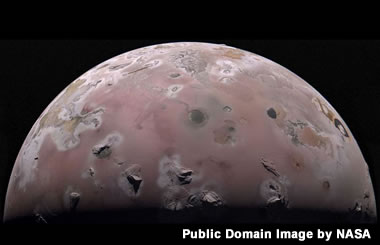
The north polar region of Jupiter's volcanic moon, Io. Image captured by NASA's Juno Mission on December 30, 2023. Image processing by Gerald Eichstädt.
NASA Live

The north polar region of Jupiter's volcanic moon, Io. Image captured by NASA's Juno Mission on December 30, 2023. Image processing by Gerald Eichstädt.
Active Volcanoes of Our Solar System
Geology.com
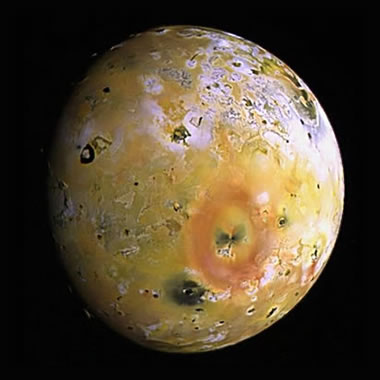
Io, a moon of Jupiter, is the most volcanically active body in our solar system. It has over 100 active volcanic centers, many of which have multiple active vents. Eruptions recurrently resurface large parts of the moon. NASA image.
Geology.com

Io, a moon of Jupiter, is the most volcanically active body in our solar system. It has over 100 active volcanic centers, many of which have multiple active vents. Eruptions recurrently resurface large parts of the moon. NASA image.
How GIA Analyzes Colored Stones from Start to Finish
Gemological Institute of America
Here’s a clear, step-by-step look at how GIA evaluates colored gemstones once they arrive at the lab.
Gemological Institute of America
Here’s a clear, step-by-step look at how GIA evaluates colored gemstones once they arrive at the lab.
VIDEO: Skies of Crimson: Uncommon Aurora Borealis Lights Up Alaska and Beyond
Alaska News Source
Images of the dark crimson red aurora in Alaska and aurorae in other parts of the world. Nice video.
Alaska News Source
Images of the dark crimson red aurora in Alaska and aurorae in other parts of the world. Nice video.
Aurora Australis from Space
Geology.com
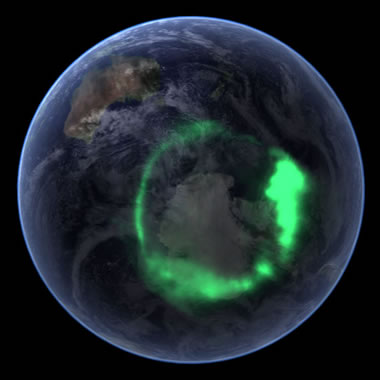
Aurora Australis: A composite satellite image of the Aurora Australis (southern lights) over Antarctica from space. The image was compiled by superimposing data of the Aurora Australis collected by NASA's IMAGE satellite atop of an image of Earth from a south polar perspective from the Blue Marble project. The result simulates what the Aurora Australis would look like from a satellite orbiting above. Image by NASA.
Geology.com

Aurora Australis: A composite satellite image of the Aurora Australis (southern lights) over Antarctica from space. The image was compiled by superimposing data of the Aurora Australis collected by NASA's IMAGE satellite atop of an image of Earth from a south polar perspective from the Blue Marble project. The result simulates what the Aurora Australis would look like from a satellite orbiting above. Image by NASA.
Researchers Used 'Space Dust' to Build a Timeline of Arctic Sea Ice History
Smithsonian Magazine
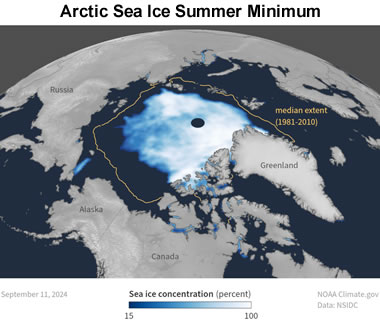
Understanding the extent of past Arctic ice could help predict how the planet will respond to global warming. Map created by the National Snow and Ice Data Center.
Smithsonian Magazine

Understanding the extent of past Arctic ice could help predict how the planet will respond to global warming. Map created by the National Snow and Ice Data Center.
What Is 'Space Dust' ?
Wikipedia Article
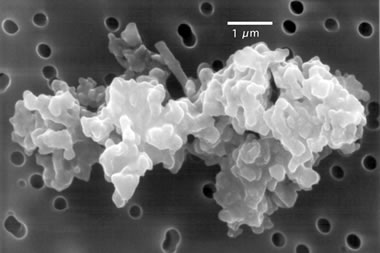
Scanning electron microscope image of a particle of 'space dust' identified as a porous chondrite. Image created by Donald E. Brownlee, University of Washington, Seattle, and Elmar Jessberger, Institut für Planetologie, Münster, Germany.
Wikipedia Article

Scanning electron microscope image of a particle of 'space dust' identified as a porous chondrite. Image created by Donald E. Brownlee, University of Washington, Seattle, and Elmar Jessberger, Institut für Planetologie, Münster, Germany.
Chondrites: The Most Abundant Type of Meteorite
Geology.com

Chondrites are stone meteorites that are made up of 'chondrules' (small grain-like spheres of extraterrestrial origin). The photo shows a complete individual of the Allende carbonaceous chondrite that fell in Mexico in 1969. Its exterior is covered by a black fusion crust. Where the fusion crust is broken away the mass of chondrules inside have a grey and white granular texture. Chondrites are thought to be derived from the stony crust of asteroids. Photograph by Leigh Anne DelRay, copyright Aerolite Meteorites.
Geology.com

Chondrites are stone meteorites that are made up of 'chondrules' (small grain-like spheres of extraterrestrial origin). The photo shows a complete individual of the Allende carbonaceous chondrite that fell in Mexico in 1969. Its exterior is covered by a black fusion crust. Where the fusion crust is broken away the mass of chondrules inside have a grey and white granular texture. Chondrites are thought to be derived from the stony crust of asteroids. Photograph by Leigh Anne DelRay, copyright Aerolite Meteorites.
